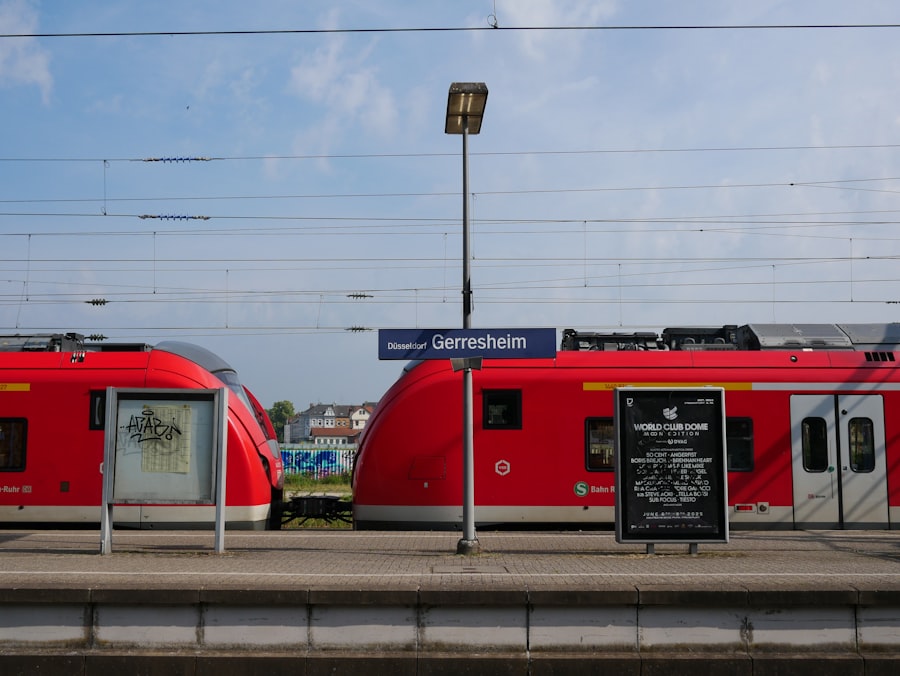The automotive industry has undergone a remarkable transformation over the past few decades, driven by rapid technological advancements and an increasing focus on sustainability. Innovations in this sector are not merely incremental improvements; they represent a paradigm shift in how vehicles are designed, manufactured, and utilized. From the integration of artificial intelligence to the development of eco-friendly materials, the modern automobile is a testament to human ingenuity and the relentless pursuit of progress.
As we delve into the various facets of automotive innovations, it becomes evident that these advancements are reshaping not only the vehicles themselves but also the entire driving experience. The convergence of technology and automotive engineering has led to a plethora of new features that enhance safety, performance, and user experience. The modern car is now equipped with sophisticated systems that were once the stuff of science fiction.
These innovations are not just about making cars faster or more luxurious; they are fundamentally changing how we interact with our vehicles and how we perceive mobility. As we explore the advanced safety features, cutting-edge performance technologies, and sustainable solutions that define today’s automotive landscape, it is crucial to recognize the broader implications of these innovations on society and the environment.
Key Takeaways
- Automotive innovations have revolutionized the industry, leading to advanced safety features, cutting-edge technology, and sustainable solutions.
- Modern vehicles are equipped with advanced safety features such as automatic emergency braking, lane departure warning, and adaptive cruise control to enhance driver and passenger safety.
- Cutting-edge technology like electric powertrains, advanced materials, and aerodynamics are enhancing the performance of modern vehicles.
- Sustainable and eco-friendly automotive solutions, including electric and hybrid vehicles, are gaining popularity as the industry shifts towards a greener future.
- The rise of electric and hybrid vehicles is reshaping the automotive industry, offering environmentally friendly alternatives to traditional gasoline-powered cars.
Advanced Safety Features in Modern Vehicles
One of the most significant advancements in the automotive industry is the development of advanced safety features designed to protect both drivers and passengers. Modern vehicles are equipped with an array of technologies that work together to prevent accidents and mitigate injuries when collisions occur. For instance, adaptive cruise control systems utilize radar and cameras to maintain a safe distance from the vehicle ahead, automatically adjusting speed as necessary.
This feature not only enhances convenience during long drives but also significantly reduces the likelihood of rear-end collisions. Another critical safety innovation is the implementation of lane-keeping assist systems. These systems use cameras to monitor lane markings and provide steering assistance if the vehicle begins to drift out of its lane without signaling.
This technology is particularly beneficial for long-distance travelers who may experience fatigue or distraction. Additionally, many modern vehicles come equipped with automatic emergency braking systems that can detect imminent collisions and apply the brakes autonomously if the driver fails to respond in time. These features collectively contribute to a safer driving environment, reducing accident rates and saving lives.
Cutting-Edge Technology for Enhanced Performance

In addition to safety enhancements, cutting-edge technology has significantly improved vehicle performance. The integration of turbocharged engines, for example, allows manufacturers to produce smaller, more fuel-efficient engines without sacrificing power. Turbocharging increases engine efficiency by forcing more air into the combustion chamber, resulting in better fuel economy and reduced emissions.
This technology has become increasingly popular among automakers seeking to meet stringent environmental regulations while still delivering exhilarating driving experiences. Moreover, advancements in suspension systems have transformed how vehicles handle on various terrains. Active suspension systems can adjust the stiffness and damping characteristics of the suspension in real-time based on driving conditions.
This technology provides a smoother ride and improved handling, allowing drivers to navigate challenging roads with confidence. Additionally, performance-oriented vehicles now often feature advanced traction control systems that optimize power delivery to the wheels, enhancing grip during acceleration and cornering. These innovations not only elevate the driving experience but also contribute to overall vehicle stability and safety.
Sustainable and Eco-Friendly Automotive Solutions
| Metrics | Data |
|---|---|
| Electric Vehicles (EVs) on the road | 3.2 million |
| Hybrid Vehicles on the road | 5.4 million |
| Carbon Emissions Reduced | 2.3 million tons |
| Number of Charging Stations | Over 100,000 |
| Recycled Materials Used in Vehicles | Over 50% |
As environmental concerns continue to rise, the automotive industry is increasingly focusing on sustainable and eco-friendly solutions. Manufacturers are exploring alternative materials for vehicle construction, such as bio-based plastics and recycled metals, which reduce the carbon footprint associated with traditional manufacturing processes. For instance, some companies have begun using hemp fibers in composite materials for interior components, offering a lightweight yet durable alternative to conventional materials.
In addition to material innovations, automakers are investing heavily in developing more efficient manufacturing processes that minimize waste and energy consumption. Techniques such as 3D printing are being employed to create complex components with less material waste compared to traditional manufacturing methods. Furthermore, many manufacturers are committing to carbon neutrality by implementing renewable energy sources in their production facilities.
These efforts reflect a broader commitment within the industry to address climate change and promote sustainability.
The Rise of Electric and Hybrid Vehicles
The shift towards electric and hybrid vehicles represents one of the most significant trends in automotive innovation today. As concerns about fossil fuel dependency and greenhouse gas emissions grow, consumers are increasingly turning to electric vehicles (EVs) as a viable alternative. EVs are powered entirely by electricity stored in batteries, eliminating tailpipe emissions and reducing reliance on oil.
Major automakers have responded by expanding their electric vehicle offerings, with many pledging to transition their entire fleets to electric by 2030 or 2040. Hybrid vehicles, which combine an internal combustion engine with an electric motor, have also gained popularity as a transitional solution for consumers hesitant to fully embrace electric technology. These vehicles offer improved fuel efficiency while still providing the convenience of traditional gasoline engines.
For example, plug-in hybrids allow drivers to charge their batteries from an external source while still having the option to use gasoline for longer trips. This flexibility appeals to a wide range of consumers and helps ease the transition towards fully electric mobility.
Connectivity and Entertainment in the Modern Car

The modern automobile has evolved into a connected device on wheels, offering an array of connectivity features that enhance both convenience and entertainment for drivers and passengers alike. Infotainment systems have become central to this transformation, integrating navigation, music streaming, and communication functionalities into a single interface. Many vehicles now come equipped with large touchscreen displays that support smartphone integration through platforms like Apple CarPlay and Android Auto, allowing users to access their favorite apps seamlessly while on the road.
Moreover, advancements in vehicle-to-everything (V2X) communication technology are paving the way for smarter transportation systems. V2X enables vehicles to communicate with each other as well as with infrastructure such as traffic lights and road signs. This connectivity can improve traffic flow, reduce congestion, and enhance overall road safety by providing real-time information about road conditions and potential hazards.
As these technologies continue to develop, they promise to create a more integrated driving experience that prioritizes convenience and safety.
The Future of Autonomous Driving
The concept of autonomous driving has captured public imagination and sparked significant investment from both traditional automakers and tech companies alike. The development of self-driving technology aims to revolutionize transportation by reducing human error—the leading cause of traffic accidents—while also improving mobility for those unable to drive due to age or disability. Companies like Waymo and Tesla are at the forefront of this movement, employing advanced sensors, machine learning algorithms, and extensive testing to refine their autonomous systems.
Current autonomous vehicles utilize a combination of lidar, radar, cameras, and artificial intelligence to navigate complex environments safely. While fully autonomous vehicles (Level 5) remain a goal for the future, many manufacturers are already implementing semi-autonomous features such as adaptive cruise control and lane centering in their current models. As regulatory frameworks evolve and public acceptance grows, it is likely that we will see an increasing number of autonomous vehicles on our roads in the coming years.
Customization and Personalization Options for Car Enthusiasts
In an era where individuality is highly valued, automotive manufacturers are recognizing the importance of customization and personalization options for car enthusiasts. Many brands now offer extensive customization programs that allow buyers to tailor their vehicles according to their preferences—ranging from aesthetic choices like paint colors and interior materials to performance upgrades such as enhanced suspension systems or engine modifications. For instance, luxury brands like BMW and Mercedes-Benz provide bespoke services where customers can select unique finishes or even design custom interiors that reflect their personal style.
Additionally, aftermarket modifications have become increasingly popular among car enthusiasts who wish to enhance their vehicles’ performance or aesthetics beyond factory specifications. This trend has led to a thriving aftermarket industry that offers everything from performance exhaust systems to custom body kits, allowing owners to create truly one-of-a-kind vehicles that reflect their personalities. As automotive innovations continue to evolve at a rapid pace, it is clear that they will play a pivotal role in shaping the future of transportation.
From advanced safety features that protect lives to sustainable solutions that address environmental concerns, these developments reflect a commitment to improving mobility for all while embracing technological advancements that enhance our driving experiences. The journey ahead promises exciting possibilities as we navigate this dynamic landscape of automotive innovation.



